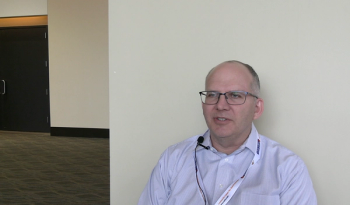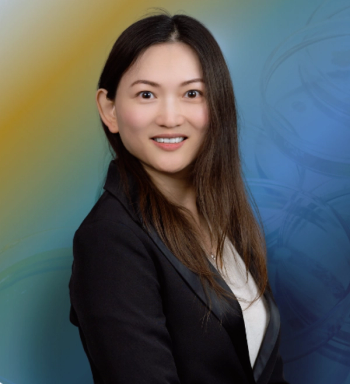
Novel Optical Spectroscopy Techniques for Analyzing Nanoscale Structures
Understanding electron- and energy-transfer processes in nanoscale systems is critical both for investigating fundamental energy redistribution mechanisms in nanoscopic media and for developing new devices based on these systems. Ken L. Knappenberger is the recipient of the 2016 Coblentz Award and is an associate professor in the Department of Chemistry and Biochemistry at Florida State University, and he and his group study these processes in nanoscale assemblies by developing and implementing novel optical spectroscopy approaches. He recently spoke to us about this work.
Understanding electron- and energy-transfer processes in nanoscale systems is critical both for investigating fundamental energy redistribution mechanisms in nanoscopic media and for developing new devices based on these systems. Ken L. Knappenberger is the recipient of the 2016 Coblentz Award and is an associate professor in the Department of Chemistry and Biochemistry at Florida State University, and he and his group study these processes in nanoscale assemblies by developing and implementing novel optical spectroscopy approaches. He recently spoke to us about this work.
A paper from early 2015 describes your group’s efforts in developing a means of creating left- and right-circularly polarized ultrashort laser pulses for use in nonlinear circular dichroism (CD) imaging (1). Can you please briefly describe this method? What are the implications of this study for CD spectroscopy and nonlinear optical imaging in general?
Sure, I would be happy to. We devised a method to generate circular (and other) polarization states by combining two orthogonal linearly polarized phase-locked femtosecond laser pulses. We implemented a pair of birefringent optics that allowed us to control very precisely-down to approximately 10 attoseconds-the time delay between the two laser pulses. By controlling the time delay with attosecond precision, we are able to combine the laser pulses in ways that allow us to generate a multitude of polarization states. The real advantage of this approach is that the optics allow us to prepare a uniformly polarized, yet spectrally broad and coherent excitation source. The uniformity of the laser polarization state reduces artifacts common to CD spectroscopy.
Conventional methods for CD spectroscopy and imaging rely on photoelastic modulators (PEMs) or wave plates. PEMs are generally operated monochromatically, so they are not ideally suited for use with femtosecond laser pulses; as a result, data acquisition is usually quite slow. For imaging applications, rapid data acquisition is desired because of the high spatial stability needed in three dimensions. The drawback of wave plates is that they generally result in a non-uniform polarization of states across the laser bandwidth. For nonlinear spectroscopy and imaging, this can present a serious problem when polarization-resolved data are needed. Therefore, we think the technical advances we have made will be significant for CD spectroscopy with high spatial and femtosecond time resolutions. These techniques can provide substantial insight into structure-specific chemical dynamics and photonic properties.
A second paper from your group discusses advances made using single-particle nonlinear optical imaging to investigate the influence of nanoscale structure on electromagnetic interactions with nanoparticle assemblies (2). How were laser pulses used in this imaging study to examine the effects of nanoparticle structure in a nanoparticle network?
The collective resonances of plasmonic nanostructures depend on the relative arrangements of the constituent nanoparticles that make up a network. The functional properties influenced by these interparticle resonances include resonator frequency, plasmon mode structure, nanoscale energy localization, polarization selectivity, and the mode quality factor, among others. In particular, the mode quality factor impacts the plasmon enhancement factors achievable for a given nanostructure.
In one example, we used laser-based interferometric nonlinear optical imaging to determine the resonance spectrum for several structures and to identify how certain modes interact selectively with specific polarization states of light. For several nanoparticle systems, we have been able to apply an interferometric approach of combining two femtosecond laser pulses in the time domain with very high precision to distinguish the relative electric and magnetic dipolar contributions to the nanostructure’s optical response.
In a second example, multipulse interferometric analysis allowed us to measure directly the plasmon coherence dephasing times for complex structures. These dephasing times are difficult to extract from linewidth analysis because the spectra of these types of multiparticle nanostructure assemblies are often complex and congested by contributions from multiple peaks. Our time-resolved approach allows us to get this information, and we are currently gaining new insights about how combinations of specific plasmon modes influence plasmon dephasing times. Again, this is a key fundamental piece of information that helps us understand the important nanoparticle parameters such as mode quality factors.
What other approaches have been used to study this system, and how does your group’s approach represent an improvement in the field?
Most previous measurements have been based on dark-field scattering and other steady-state linear measurements, which provide a great way to measure the radiative properties of nanostructures. By comparison, interferometric nonlinear optical experiments can be designed such that both the real and imaginary portions of the spectra can be obtained; this is necessary for a complete description of nanoscale light–matter interactions. Also, other measurements don’t allow for a full range of phase- and polarization-dependent measurements, and we can easily perform these measurements through single-nanoparticle nonlinear optics by using phase cycling of multiple laser pulses.
Your group has also used chemically patterned surfaces with nanoscale features and tailored surface chemistry to construct multicomponent nanostructures (3). In what research or practical application areas do you expect this approach to be used?
Many possibilities exist. Light amplification and confinement by plasmonic structures are typically greatest for multicomponent assemblies. This characteristic is due to electromagnetic confinement to the nanoscale volume between the particles but also because the quality factors of the resonances depend on mode coupling between particles. Therefore, you can tailor the structure to make a more efficient light transducer, whether the transduction is intended for use in sensing, energy conversion, stimulated emission, or other photonic applications.
What are the next steps in your research?
To me, one of the most fascinating aspects of the research is that the functional photonic properties of these materials seem to have underpinnings in molecular spectroscopy. Quality factors are determined by dephasing, which can be controlled by how strongly modes of different angular momenta interfere. This is really very similar to dephasing of electronic and vibrational state superpositions in excited molecules. It will be very interesting to see how the tools of molecular spectroscopy can be applied to understand the functional aspects of photonic materials. We are also exploring ways that polarization-dependent nonlinear optics can be used to screen in situ for nanoscale structure-this is very much a molecular-like analog because different point group symmetries yield very specific polarization-dependent nonlinear optical signals. If this works, it is conceivable that one can use a single optical microscope to identify structure (at least symmetry) and then carry out dynamics measurements. I am also very much interested in examining how these particles can be used to amplify magneto-optical signals. The magneto-optical imaging aspect is very appealing because one could devise measurements that provide the information content of magnetic resonance, but with the spatial resolution afforded by optical measurements.
References
- J.W. Jarrett, X. Liu, P.F. Nealey, R.A. Vaia, G. Cerullo, and K.L. Knappenberger Jr., J. Chem. Phys. 142, 115101 (2015).
- J.W. Jarrett, T. Zhao, J.S. Johnson, and K.L. Knappenberger Jr., J. Phys. Chem. C119, 15779–15800 (2015).
- X. Liu, S. Biswas, J.W. Jarrett, E. Poutrina, A. Urbas, K.L. Knappenberger Jr., R.A. Vaia, and P.F. Nealey, Advanced Materials27, 7314–7319 (2015).
Newsletter
Get essential updates on the latest spectroscopy technologies, regulatory standards, and best practices—subscribe today to Spectroscopy.





